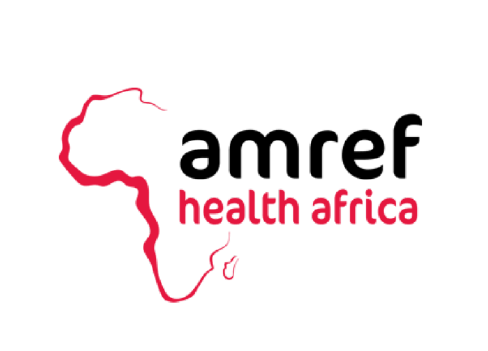Mount Kilimanjaro, the majestic dormant volcano in Tanzania, stands as the tallest free-standing mountain in Africa. At 19,341 feet (5,895 meters), Kilimanjaro is not only Africa’s tallest peak but also the world’s tallest free-standing mountain. Most high mountains are part of ranges, such as Mount Everest’s Himalayan Mountain Range, formed in a process called plate tectonics when tectonic plates collide. Free-standing solitary mountains like Kilimanjaro are usually a result of volcanic activity. Volcanic mountains are formed when molten rock erupts through the Earth’s crust and piles upon the surface over time.
Unlike technical climbing peaks, scaling Kilimanjaro requires no special equipment or mountaineering skills. There are no glaciers, so tools like ropes, harnesses, crampons, and ice axes are not needed. Therefore, it is a hiking or “walk-up” peak, making it accessible to amateur climbers. However, safety should still be the number one priority for a successful summit of Kilimanjaro.
Trekking Kilimanjaro is a dream for many adventure seekers across the world. Reaching the summit of Africa’s highest peak is an ambitious goal that draws over 35,000 trekkers each year. However, it’s not without its challenges. This guide delves into the dos and don’ts of conquering Kilimanjaro to ensure a safe and enjoyable climb to the top.
Dos Before You Go
– Get in peak physical condition with regular cardio workouts and strength training. Kilimanjaro treks anywhere from 5 to 9 days depending on the route, covering over 30 miles round trip with thousands of feet in elevation gain. People of all ages have summited, but appropriate conditioning is vital.
– Select a reputable tour operator and confirm they have extensive experience in Kilimanjaro. Research their track record, safety measures, number of successful summits, and customer reviews. Choose a guide intimately familiar with the mountain and climate. You need to fully trust your guide when at high altitude.
– Secure permits and necessary travel documents well in advance through your chosen operator. Bureaucratic logistics can easily delay or derail your climb if not addressed early.
– Pack properly with layers, broken-in hiking boots, a reliable backpack, a high-quality sleep system rated for subzero temperatures, and other essentials like a headlamp, water purification, sun protection, and altitude sickness medication.
Dos During the Climb
Once on the mountain, there are several best practices to follow:
– Climb slowly and steadily to properly acclimatize to the decreasing oxygen levels at altitude. Follow the “pole pole” (slowly, slowly) mantra. Trying to rush increases your risk of altitude sickness, which can manifest as severe headaches, nausea, vomiting, and exhaustion.
– Stay very well hydrated by drinking lots of water and avoiding alcohol and caffeine at altitude. Also, eat plenty of carbohydrate-rich foods to maintain energy levels. Do not ignore any symptoms of altitude sickness – communicate promptly with your guide.
– Closely follow your guide’s experience, instructions, and pace. Do not stray from the marked trails to protect Kilimanjaro’s fragile alpine ecosystem. Staying on track also reduces your risk of injury or becoming lost.
– Make time to pause and soak in the stunning scenery around you. Consider the unique geology and plant and animal life found at varying elevations. Kilimanjaro is home to distinct ecological zones from cultivated farmlands to the Afro-alpine desert on the summit.
– Leave no trace by packing out everything you bring in. Respect Kilimanjaro’s pristine natural beauty by not littering. Preserve this special place for others, and for yourself in the future.
Handling the Summit Push
The trek to Uhuru Peak requires extra preparation:
– Begin hiking well before sunrise to summit at dawn if weather permits. This timing maximizes your chances of reaching the top with the best trail conditions. Summiting for sunrise offers breathtaking views.
– Layer properly to prevent hypothermia and overheating. Temperatures drop below freezing pre-dawn but you’ll heat up as you exert yourself hiking. Bring adequate warm layers as well as breathable garments you can remove.
– Maintain relentless mental focus and stamina. Keep your eyes on the prize through self-talk, inspiration from your surroundings, and support from your team. Stay determined to push through when your body says stop.
– Heed your guide’s instructions, especially as you near the summit in the high altitude ‘death zone’ above 18,000 feet. Their expertise is invaluable to ascend safely. Check-in frequently about how you are feeling.
– Once at Uhuru Peak, celebrate briefly then start your descent within 30 minutes. Prolonged time at summit elevation increases health risks. Refuel, hydrate, and dress warmly before beginning the knee-jarring descent.
Stay Safe After Summiting
– Don’t let your guard down post-summit. Many mountaineering accidents happen on the descent when climbers are mentally and physically depleted. Maintain focus.
– Continue hydrating, eating, and keeping warm. Do not rush the descent – the trail is very taxing on tired legs and knees.
– Monitor for signs of altitude sickness which can still onset. Adrenaline wearing off can reveal how impacted you are by the extreme elevations.
With careful preparation, responsible climbing practices, and persistence through adversity, you can check off the bucket list dream of summiting Mount Kilimanjaro, the Roof of Africa! Conquering the tallest freestanding mountain on Earth is an incredible personal accomplishment.
If you’re searching for more information on trekking Kilimanjaro, please see our FAQ and many other resources.
At African Paradise Adventures, we pride ourselves on providing all the proper resources so that our clients can more fully experience and appreciate affordable East Africa safari tours and holiday packages that range from bucket-list adventures to ultra-luxurious vacations. We offer diverse safari destinations, the best prices, and customized African safaris that serve your unique needs.
Don’t hesitate – book your African adventure today!






